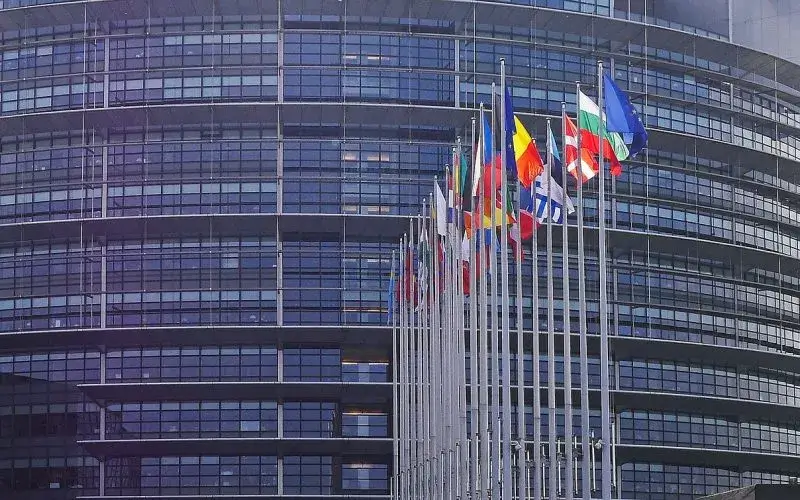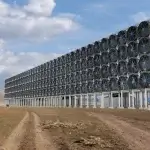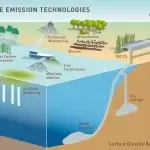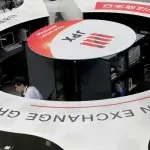EU Parliament Approves The Carbon Removal Certification Framework And Net Zero Industry Act

The European Parliament voted on November 21st in a plenary session on long-awaited and debated climate policies. The Parliament has approved the Carbon Removal Certification Framework (CRCF) and the Net Zero Industry Act (NZIA), demonstrating its support for scaling up carbon dioxide removal (CDR) capacity in the EU – part of the bloc’s strategy in reaching climate neutrality by 2050.
The votes on CRCF are 448 Yes, 65 No and 114 abstentions. The Parliament alsoendorsed the proposed changesof the ITRE Committee on the Net-Zero Industry Act (NZIA) which are considered a substantialimprovementof the Commission’s proposal and recognize carbon dioxide removal (CDR) as part of the net zero technologies in the scope of the Act.
The Carbon Removal Certification Framework
Theamendments adoptedby the European Parliament on the Carbon Removal Certification Framework from the text proposed by the Commission, aim to ensure a more robust framework. Overall, they are a step forward towards recognizing carbon removals as a necessary part of the net zero mix and integrating them into the EU climate policy landscape.
The Parliament introduced four distinct types of certified units – carbon removal, carbon storage in products, carbon farming sequestration, and carbon farming emissions reduction. Only activities that store atmospheric or biogenic carbon for ‘several centuries’ are able to qualify as carbon removals. The amendments confirm these four different activities will generate distinct certificates.

The text proposed by the Parliament is considered an improvement compared to the original Commission draft, however, the definitions of carbon removal and permanent storage are still broad and do not provide clarity on the inclusion of certain technologies like biochar carbon removal, enhanced rock weathering and ocean carbon removal.
Relevant:Carbon Removal Organizations Call For Technological Neutrality In EU’s Framework
Theoutreachof carbon removal organizations to the Parliament made in October has apparently not been taken into account in the amendments. The carbon removal ecosystem was urging EU legislators to ensure that the Carbon Removal Certification Framework (CRCF) is technology-neutral and offered suggestions for definitions for carbon removal and permanent carbon storage.
| Text proposed by the Commission | Amendments by the Parliament | Recommended text by the CDR ecosystem |
| ‘carbon removal’ means either the storage of atmospheric or biogenic carbon within geological carbon pools, biogenic carbon pools, long-lasting products and materials, and the marine environment, or the reduction of carbon release from a biogenic carbon pool to the atmosphere; | ‘carbon removal’ means the permanent storage of atmospheric or biogenic carbon for several centuries, which is not combined with Enhanced Hydrocarbon Recovery; | ´carbon removal´ means the anthropogenic removal of carbon from the atmosphere and its durable storage in geological, terrestrial, or ocean reservoirs, or in long-lasting products. |
| ‘permanent carbon storage’ means a carbon removal activity that, under normal circumstances and using appropriate management practices, stores atmospheric or biogenic carbon for several centuries, including bioenergy with carbon capture and storage and direct air carbon capture and storage; | ‘permanent carbon storage’ means an activity consisting of one or more practices or processes carried out by an operator that, under normal circumstances and using appropriate management practices, stores atmospheric or biogenic carbon for several centuries through geological storage of CO2 or permanently bound carbon mineralisation; | ‘permanent carbon storage’ means a carbon removal activity that, under normal circumstances and using appropriate management practices, stores atmospheric or biogenic carbon for several centuries, including, amongst others, bioenergy with carbon capture and storage and direct air carbon capture and storage; |
| ‘carbon farming’ means a carbon removal activity related to land management that results in the increase of carbon storage in living biomass, dead organic matter and soils by enhancing carbon capture and/or reducing the release of carbon to the atmosphere; | ‘carbon farming’ means an activity related to land management, coastal management or animal husbandry, that results in carbon farming sequestration or carbon farming emission reductions for a period of at least five years; | |
| ‘carbon storage in products’ means a carbon removal activity that stores atmospheric and biogenic carbon in long-lasting products or materials; | ‘carbon storage in products’ means an activity consisting of one or more practices or processes carried out by an operator which ensures long-term storage of atmospheric and biogenic carbon in long-lasting harvested wood products or materials for construction for at least five decades in a manner consistent with other Union environmental objectives, as well as Regulation (EU) 2018/841 and IPCC Guidelines as adopted by the Conference of the Parties to the UNFCCC or the Conference of the Parties serving as the Meeting of the Parties to the Paris Agreement; | |
| ‘carbon storage in products’ means an activity consisting of one or more practices or processes carried out by an operator which ensures long-term storage of atmospheric and biogenic carbon in long-lasting harvested wood products or materials for construction for at least five decades in a manner consistent with other Union environmental objectives, as well as Regulation (EU) 2018/841 and IPCC Guidelines as adopted by the Conference of the Parties to the UNFCCC or the Conference of the Parties serving as the Meeting of the Parties to the Paris Agreement; | ||
| ‘carbon farming emission reduction’ means an activity consisting of one or more carbon farming practices or processes carried out by an operator that results in the reduction of carbon release from a biogenic carbon pool, the reduction of nitrous oxide release from agriculture soils or manure management, or the reduction of methane release from enteric fermentation or manure management to the atmosphere through a carbon farming activity; |
The industry is calling on EU institutions to develop definitions that are inclusive, future-proof and based on criteria such as permanence and liability, providing a certification pathway for all safe and effective removal methods.
There are also some other remaining issues that have attracted attention. The draft does not state how the certificates will be used to avoid greenwashing tactics from emitters. Additionally, it needs to ensure that only carbon removal units will be used for companies to make net zero/climate neutrality claims, and not emissions reduction/avoided emission units, in line with IPCC definitions.

Only durable, long-lasting for millenia carbon removals will have to be used to offset emissions from fossil fuels in order to adhere to the like-to-like principle. The Framework also lacks providing a clearer liability in the event of a reversal and restrictions on the types of claims that can be made.
According to the amendments, biochar activities are categorized under carbon farming activities rather than carbon removals in particular. The text states that the use of biochar can be categorized under different types of activities depending on the specific conditions under which the activities take place.
The certification of carbon storage in products is also proposed to be initially limited to harvested wood products or materials for construction storing atmospheric and biogenic carbon stored for at least five decades and should be based on the report to be presented by the Commission. That is due to uncertainties in the measuring and monitoring methodologies related to other potential applications of carbon storage in products which are in early development stages.
The Net Zero Industry Act
The Parliament confirmed its position on the Net Zero Industry Act (NZIA) with 376 votes in favour, 139 votes against and 116 abstentions. The Parliament added carbon removal to the list of net zero technologies supported by the act and recognized CO2 capture, infrastructure, and storage projects as “Net-Zero Strategic Projects”.
The responsibility of oil and gas entities to contribute to developing CO2 storage across the EU, has been extended from producers to all suppliers. The new provisions also call on member states to directly support CO2 storage projects which raises the question who will ultimately pay the bill of this obligation – the European taxpayers or the oil and gas industry, responsible for those emissions in the first place.
Relevant:NGOs Urge EU To Make Oil And Gas Producers Responsible For Delivering CO2 Storage
A clearly stated allocation of financial responsibilities on the oil and gas industry is needed to avoid lack of clarity and confusion. Confirmed is the proposed EU annual CO2 injection capacity target of at least 50 million tonnes by 2030.
What follows next is Trilogue discussions between the European Parliament, the Council, and the Commission to determine the final version of the Carbon Removal Certification Framework. They will start on November 28th with an agreement expected to be reached by mid-March 2024.
A broader technology inclusivity for carbon removals is needed in the negotiations to ensure the policy comprises all carbon removal solutions unbiasedly as long as they provide the durability and long-term storage. Stricter rules on the usage of the CDR certificates are also critical to ensure the like-to-like principle and efficiency of policy in terms of mitigating the climate crisis.







